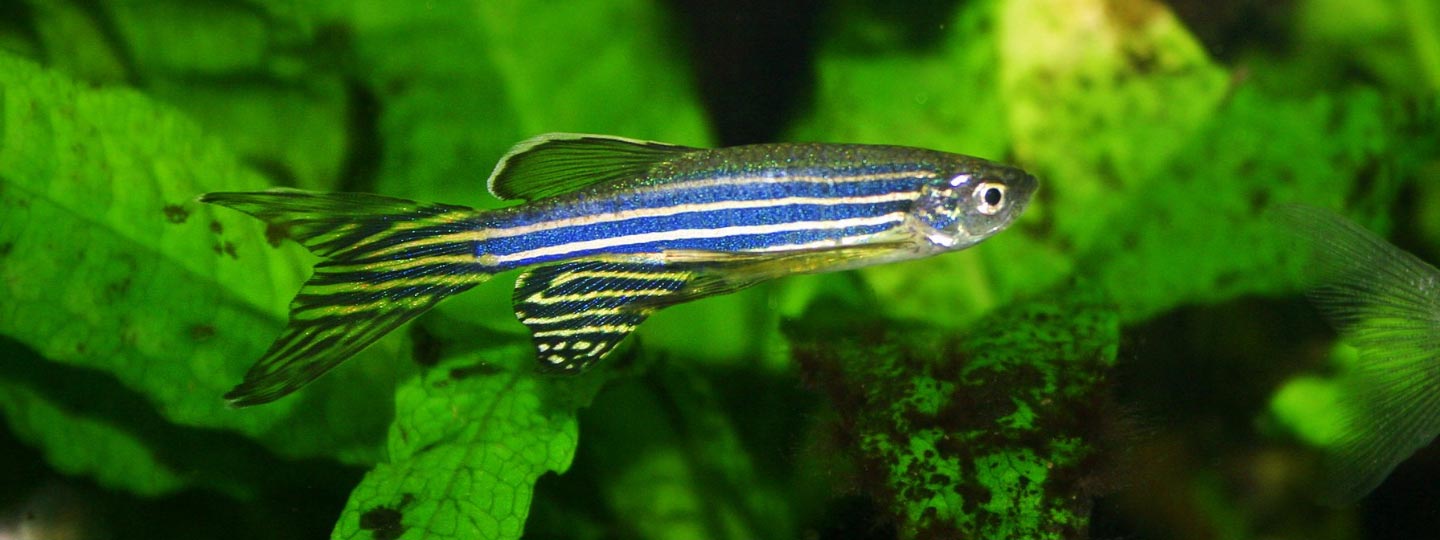What can fish tell us about the health of our bones?
22 November 2021
The genome of zebrafish is remarkably similar to that of humans, sharing around 70% of our genes. This similarity means that studying the biology of zebrafish can help us to understand human health conditions.
As an example, studying how bones and joints develop in zebrafish can help us to understand arthritis in humans. This is easy as young zebrafish have transparent bodies, meaning the development of their bones can be easily observed.
To learn more, read about these research projects involving fish that we’re currently funding:
How does bone density influence degeneration of the spine?
Intervertebral discs are cartilage structures that sit between the bones of the spine, known as vertebrae. Together, they make up the central part of our skeletal system.
Degeneration of the intervertebral disc is one of the major causes of back pain. Injury and overuse can influence health of the discs, however the factors that cause the discs to degenerate are not fully understood.
What research are we doing?
To help understand more about what causes the discs to degenerate, Versus Arthritis Senior Research Fellow Dr Chrissy Hammond and her team at the University of Bristol are studying the changes of the spine in zebrafish.
Dr Hammond is exploring changes that are linked to osteoarthritis and disc degeneration, to better understand why these conditions happen. In a recently published research paper her team has found that changes to bone density of vertebrae have a knock-on effect on the health of the intervertebral discs.
Studying the structure of the spine in zebrafish using 3D scan techniques revealed if bone density was higher or lower than normal, intervertebral disc degeneration was observed. The research also showed that a specific gene called sp7 plays a role in controlling bone density.
What difference could this research mean for the future?
The sp7 gene could be a potential target for treatments to improve bone density and therefore treat or prevent degeneration of the spinal discs. If developed successfully, this could help many people suffering with back pain.
Which genes control the development of osteoporosis?
Osteoporosis occurs when bones lose some of their density and become more fragile. The holes in the bone’s honeycomb structure become larger, which is why the bone is more likely to fracture.
Bone density is impacted by factors including diet and exercise, and previous research using human tissue samples from the UK Biobank has found hundreds of genes that are thought to influence bone strength.
However, the exact role of genes in arthritis has not been thoroughly investigated, so more research is needed.
What research are we doing?
Research led by one of our foundation fellows Dr Dylan Bergen is observing bone development in zebrafish to find out more about the genes identified by in Biobank studies. The team hope to reveal which genes in particular influence osteoporosis.
What difference could this research mean for the future?
This research will improve our understanding of osteoporosis but may also help researchers to identify genes that could be targeted with new treatments aimed to increase bone strength and prevent osteoporosis from occurring.
Learn more about fish and medical research
You can read more information about why zebrafish are used in medical research and the UK animal research statistics on the Understanding Animal Research website.
We’re here whenever you need us.
- If you would like to talk to someone, you can call our free helpline on 0800 5200 520
- Chat to our Arthritis Virtual Assistant
- Join our online community
- Stay in touch and follow us on Twitter, Facebook and Instagram.
You might also be interested in...
-
Five ways to help manage back pain
Learn five methods of managing your back pain - continue with your routine, keep moving, don't suffer in silence, apply treatments and keep to a healthy weight.
-
Exercises for healthy joints
Try these exercises for neck, shoulders, knees, back, hips, feet, ankles, toes, wrists, fingers and hands to manage your condition and maintain healthy joints.